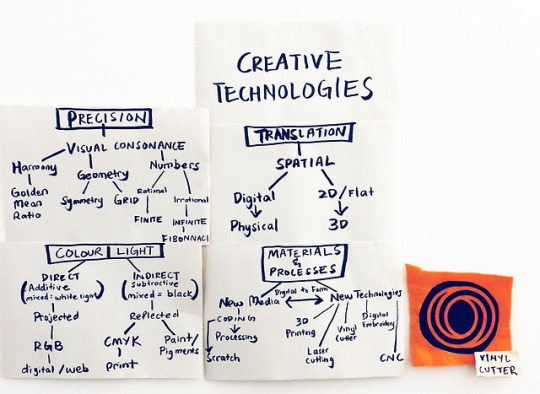Text
Assembly Blocks: Abstract Cityscapes
Summary of my project
Abstract Cityscapes is a 3D puzzle game that functions as both an educational toy as well as a design-art object.
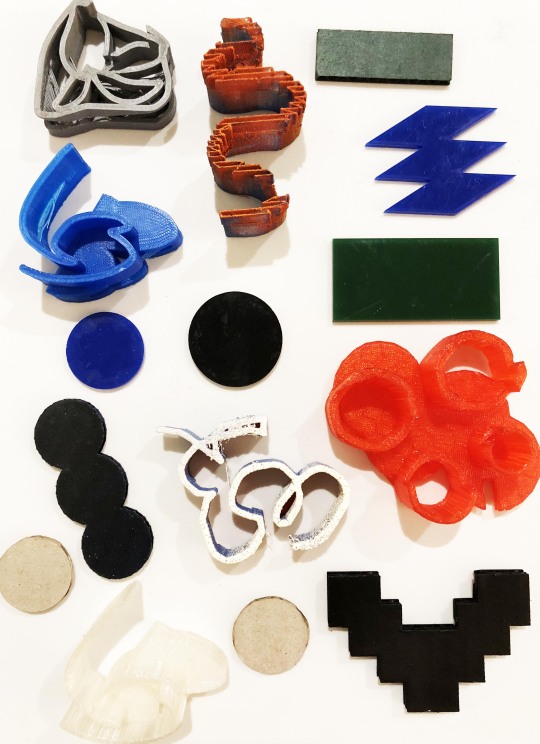
As an educational tool, it inspires creativity by promoting divergent thinking as well as the development of spatial thinking. Assembly Blocks is designed to encourage one to explore the relationship between negative and positive spaces with forms of various sizes, shapes and materials.
The process of taking pieces apart and then finding a way of putting them together allows one to get directly involved in the act of making, through inserting, stacking, fitting, arranging etc.
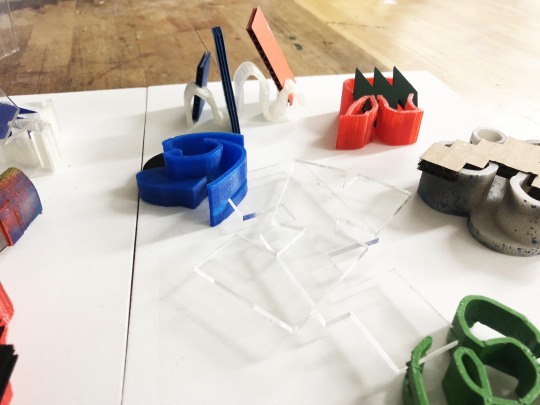
It encourages one to bridge the connection between what they can observe in reality in relation to what they are making with the geometries of Assembly Blocks.
Process
When I first started my passion project, the 3D pieces were conceived separately as individual sculpture-objects using Tinkercad and then fabricated through 3D printing and laser cutting technology.

And along the way, I also encountered numerous glitches in the 3D printing process.
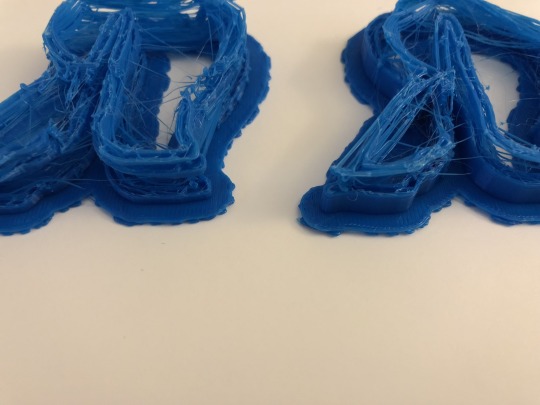
Although it was disheartening at first, I found the errors and inconsistencies to be aesthetically pleasing and somewhat closer to my understanding of what the notion of Art and Creativity entails.
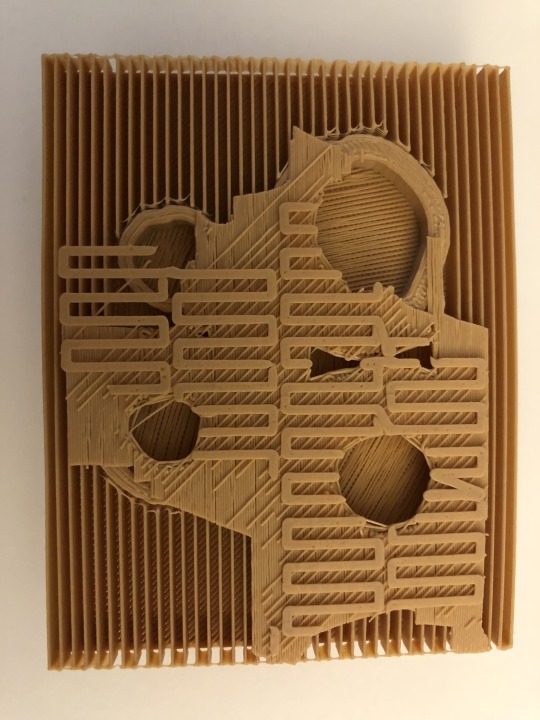
Errors disrupt the mechanical and serialized fabrication process of the machine to produce surprises and unexpectedly original forms.
This was how the aesthetic of errors became a part of the Assembly Blocks design and construction process.

Inspiration and Research
I was able to make a lot of meaningful connection between what I was doing and to some of the things I encountered during a trip to MoMA.
Bodys Isek Kingelez
Kingelez found immense potential within simple everyday materials, recycling and transforming the materials into high-tech skyscrapers and smart cities using simple tools such as scissors, glue and tapes as well as primitive hands-on methods of folding, cutting, building and stacking.


I was inspired by the sheer amount of divergent ideas he had, in terms of how he was able to manipulate the materials to do different things in order to bring his visions to life.

And that was what led me to decide to create a puzzle where people could learn about the different ways to merge the different materials of various shapes and sizes whether it it through stacking, inserting or bridging etc.

Boulding Blocks
I also encountered several designer toys currently trending on the market at the MoMA store. And one particular example that caught my attention was the Boulding Blocks, which was built upon a very simple idea but with immense potential.


Two pieces, countless possibilities, take it apart and put it together... which I believe to share a very similar line of thought to what I was trying to achieve.
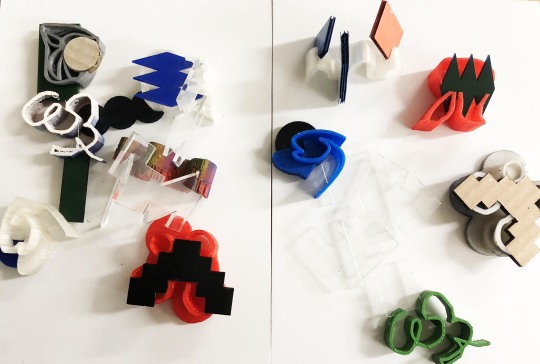

This was how I arrived to this final stage of my project.
I envision Assembly Blocks to be a fun and playful educational tool that could be used inform people of all ages about art, design and creativity.
0 notes
Text
CITYSCAPES
BUILDING a geometric abstract 3 dimensional “cityscapes”, drawing inspiration from the work of Bodys Isek Kingelez (image below).
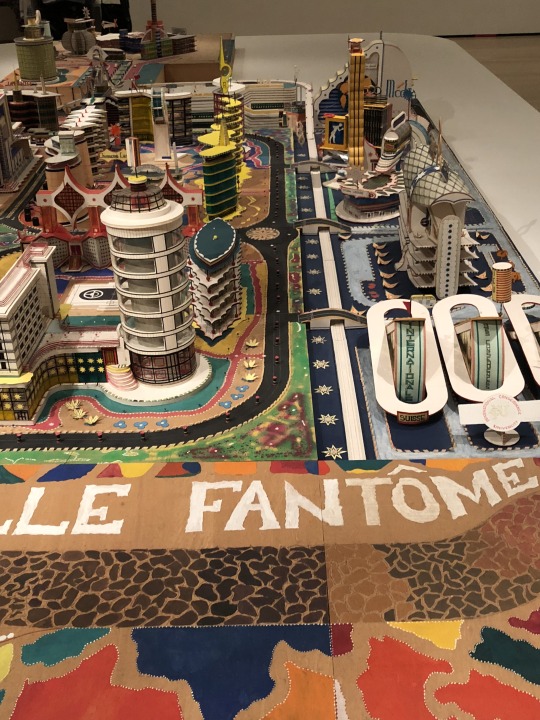
Puzzle = A game that builds on the idea of deconstruction and construction. It involves putting together two or more exact pieces at any one time.
As shown in the examples last week, Boulding Block works in two different ways.

In order to reach to a cube, it works like a puzzle where 2 or more pieces must fit at very precise places. On the contrary, it also works in an expansive way, where 2 or more pieces can fit anywhere, expanding in never ending directions.
In my final project, it involves putting together all the different pieces of my previous 3D printing prototypes. The final composition functions as a design-art object as well as an educational puzzle toy.


The above image is the final visualization on Tinkercad, although the final design will be painted. It will also incorporate some of the “aesthetics of errors” which will add visual interest and textural variety to the puzzle game.
Individuals will be able to construct the design by way of finding and joining the different pieces of the 3D puzzle.
The 3D puzzle will allow individuals to learn about the formal qualities of art and design as well as sculptural 3D forms in a fun and informal way.
0 notes
Text
Fun Design Objects
Research on Educational Design Products
A trip to the MoMA store led to the discovery of several fun design objects currently trending in the market!
They are collectible, customizable and beautiful design objects that inspire one to think outside of the box though play and arrangement.
Playable ART Ball are magnetic balls that can be rearranged in myriad of creative ways, even functioning as an iPhone holder:
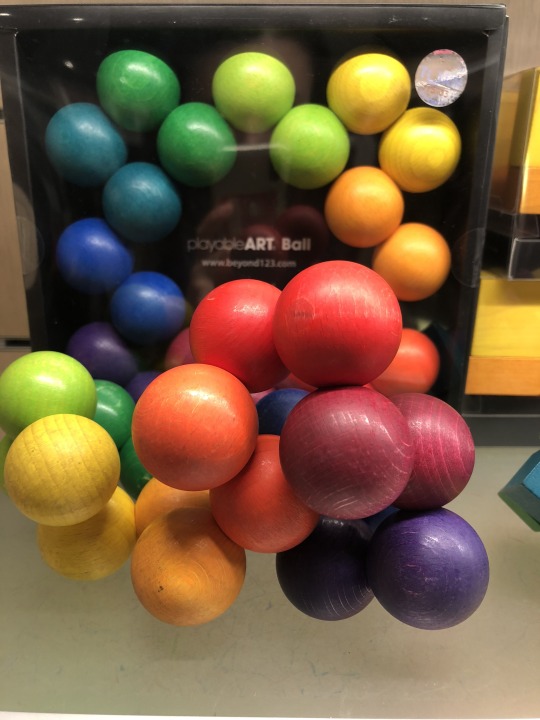

Also available as playable ART Cube:
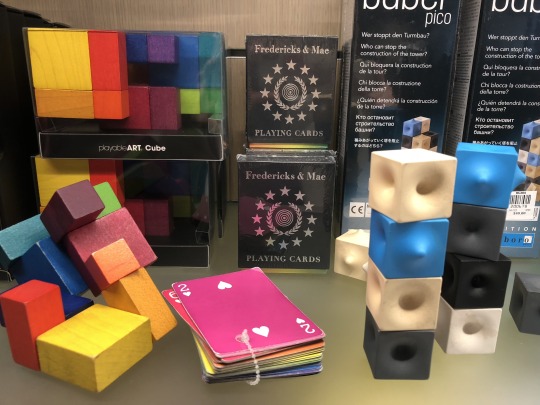
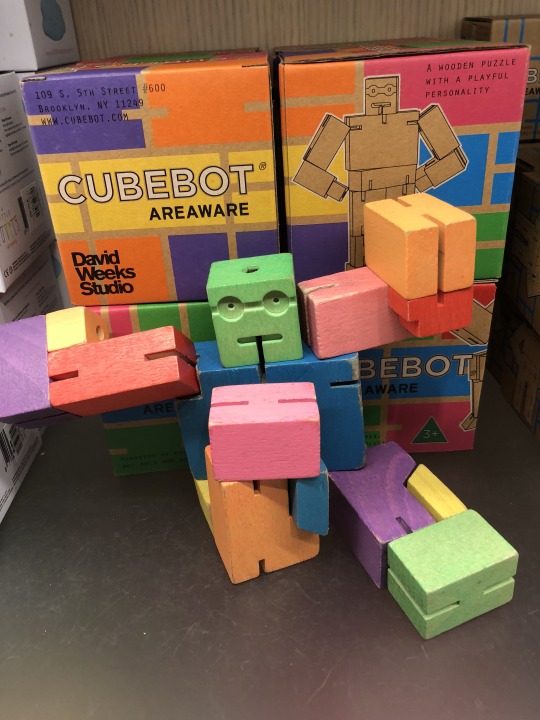
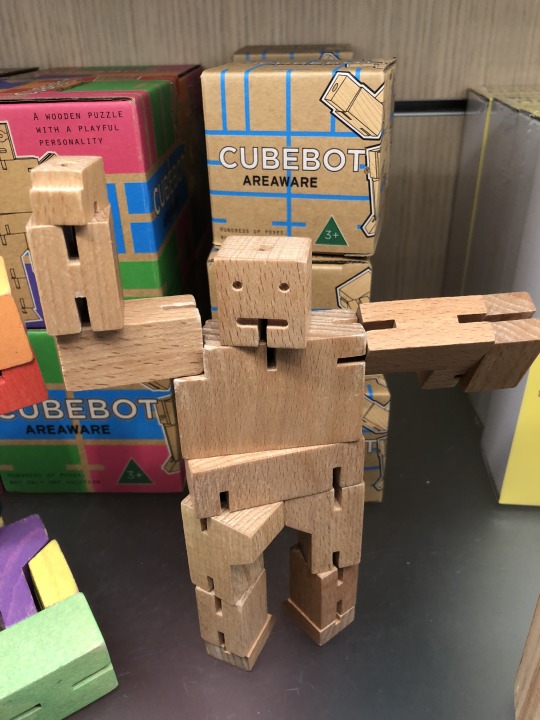


Boulding Blocks, invented by artist Mark Boulding, explore the spatial relationship between form (positive) and space (negative). It’s intended as an educational puzzle, a game as well as an art and design all at once. It can be rearranged into unlimited ways of expression. It is a fun object for people from all walks of life: children, students, architects, artists, seniors etc.
Boulding started creating the cube version through 3D printing as a prototype to test out the feasibility of his idea.


What I find incredibly fascinating about the design objects/toys is the similar line of thought that we all share - an art and design object that functions as an educational puzzle toy for everyone.
In particular, I find a great deal of affinity to the Boulding Blocks, how one part could be inserted into another as well as the exploration of negative and positive spaces.
In the last remaining weeks, I will be focusing on ways to streamline my design idea and the educational element of my design object. This will be the final product that I am looking to be exhibiting.
0 notes
Text
ASSEMBLE: Divergent Tink-ing
Through the working method of assembling various materials, processes and shapes, the resulting small sculpture-objects are exemplary of an array of divergent thinking in action. Errors are embraced a form of aesthetic, which opens up the visual vocabulary beyond the formal qualities.
In the second part of my passion project, I am assigning my 3D objects a function: Design objects/toys for children to learn about the principles of art and design and creative processes involved through de-assembling and assembling the parts.
Some of the learning outcomes are:
1. To recognize the different regular and irregular shapes.
2. To identify the different texture of the materials, as well as the different textures of errors and non-errors.
3. To learn how a variety of materials can come together.
4. To identify the different names of colors.
5. To create a variety of sculpture objects through following a set of guidelines on how to assemble them.
There will be up to 8 sculpture-objects that can be de-assembled and assembled. This will include more than one possible ways, when more than one type of material can be inserted into the object.
A set of cards with guidelines will provide the images and information for each sculpture-object. On the cards, a description of the types of materials, colors, textures, lines and shapes present in the object will also be stated.
The purpose of the toys is to allow children to play with the creative processes, aesthetics as well as the different forms and shapes involved in art-making, in order to foster the development of creative ideas through the introduction of divergent thinking.
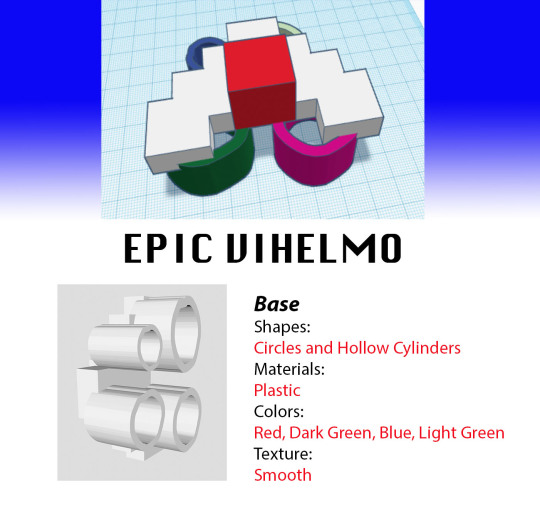
0 notes
Text
Fabrication
In this sculpture-object, I was looking to insert a laser cut geometric form diagonally into a 3D print.
The result of the print was less than perfect but I was able to fit in my laser cut after some chiseling and filing work.

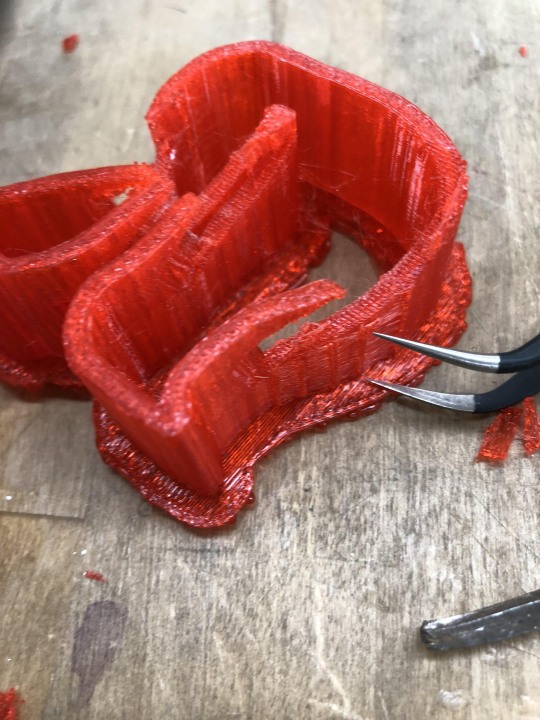


This second sculpture-object has some fascinating texture as a result of error/glitches. The way the machine fabricated the 2D blueprint was a complete unexpected development. Having left a void so that the forms are “hanging” in the air, the machine added another platform composed of horizontal lines (see the 4th image). This element of unpredictability of not knowing what to expect of my 3D prints highlights the limits to which we are able to control the machine behavior and outcome.
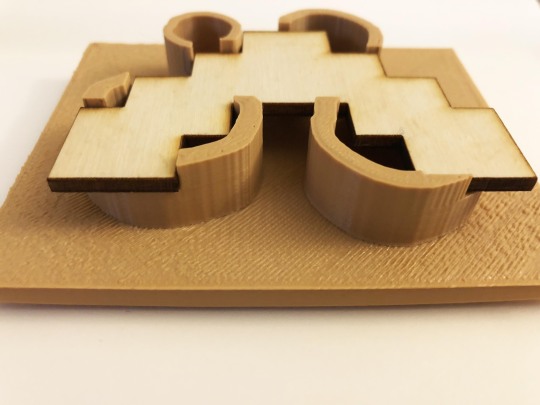

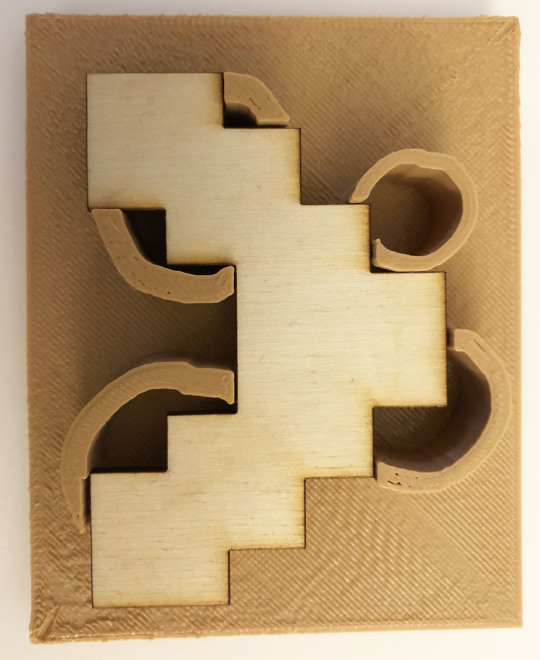
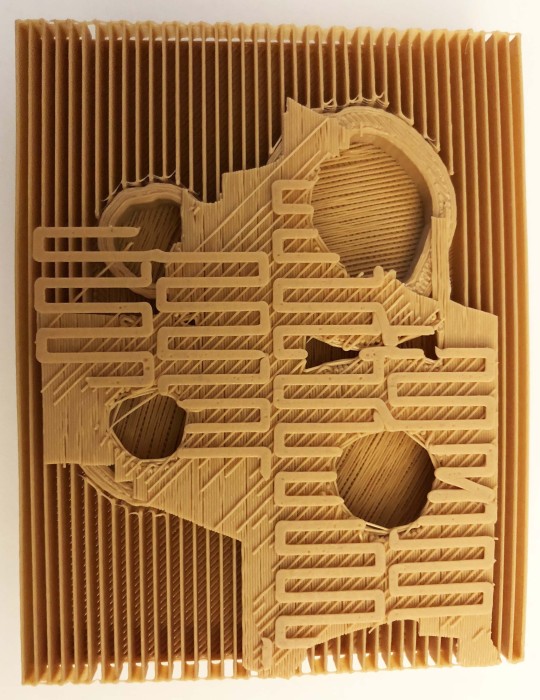
For the third sculpture object below, I have printed the same object twice. From the images, you can see how two objects from the same 2D blueprint exhibit very different outcomes. It is interesting to see how this inconsistency can also occur to machine generated objects.
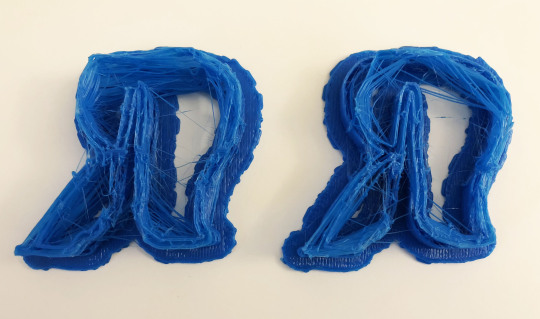

By traversing beyond the limits of the technology, in this case, it’s the 3D printer, we can uncover the creative potential that lies beyond its pre-programmed system. As counter-intuitive as it may be, the more glitches and errors we generate during the process, the more control will we be able to wield over the machines.
0 notes
Text
The Aesthetics of Error
Here are some of my 3D prints for this week’s experiments:

In the first instance, the print is perfectly formed.The mesh are lined up in an orderly manner.

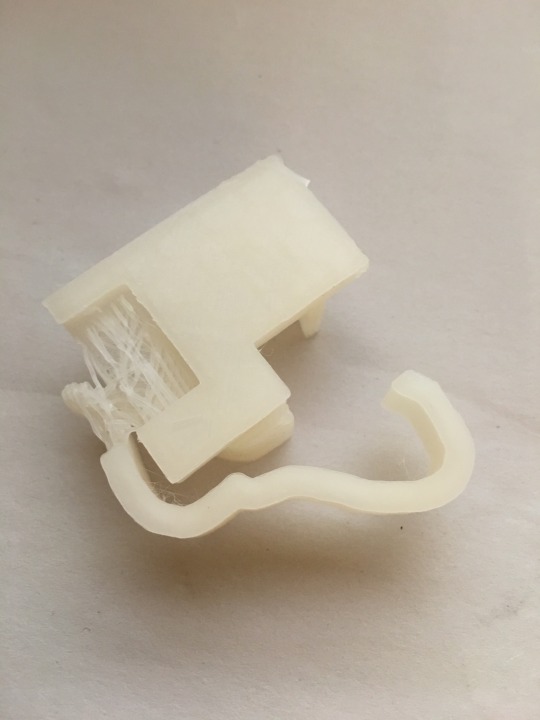
In the second print, the top have turned out finely, unlike the bottom, where the output consists of blobs, strings and a slight warping. Again, there was a gap at the bottom without any foundation beneath that resulted in the error. This was an expected error because my previous experiments have informed me on how an error in printing would result if there are no foundational layers to support it.

In the third print, it was a machine produced error. It was not expected and not part of my intended design.The print was completely covered in strings with no perfectly formed areas, except for the bottom scaffolding layer.
Upon reflecting on some of the developments in my creative technologies studio work this week, I thought of how: 1. The third print represents an out-of-control error produced as a result of a deviation from what it is pre-programmed to do. 2. The second print, on the other hand, represents the exploitation of the error as a form of aesthetics, involving the framing of a set of parameters in order to produce a controlled error.
The second print consists of unexpected elements within a controlled boundary. The third print is a completely unexpected development.
My studio work next week would continue moving in this direction, in the exploration of the aesthetics of error.
0 notes
Text
STACKS
In this week’s experiments, I have developed a new series of sculpture-objects called “Stacks” where one form/shape is stacked on top of another. This manner of construction differs from the previous experiments. Instead of inserting another part horizontally in the middle of the object, the shape will be inserted from the top. Essentially, I have changed the configuration, how the parts will be placed together as well as the procedure in which it will be printed.
Through the process of creating these 2D blueprints, I am finding a lot parallels between 3D printing, collage as well as printmaking. In printmaking, particularly screen printing, there is a lot of consideration given to how the different layers build up to the next and eventually building up to the sum of the whole composition. In collage too, each disparate component is layered on top of another, assembling into an entirety.
In the following week, I will be directly involved with the process of making, which will help me identify what is working and what is not, what is feasible with the technology and what are the limitation. I will also be looking to experiment with some prints in order to study the layering processes, and look into the idea of stacking one idea on top of another.













0 notes
Text
Next Steps
It has been an exciting overall 6 weeks so far experimenting with creative technologies!
My ideas have been borne out of the limitations and constraints of technology as I was working and experimenting with the different tools in ThingSpace. One of comment pointed out from our guest panel last week was how effective use of technology involve a certain amount of skill and experience in handling the technology. Thus, failure or glitches can be created by pushing the limits of the technology as one’s understanding of it expands and deepens.
For my passion project, I will be creating a constellation of sculpture-objects using a variety of technology available in the studio, building upon this idea of accidents/errors and human intervention. The idea is to investigate how errors and glitches could possibly be closer in meaning and ontology to art.
There is something rather poetic in errors, glitches and dissonances. It’s interesting how it goes against the visual consonance, predictability and repetition, as we would ordinarily expect from the involvement of technology. Disruptions are surprising, erratic and unexpectedly original. For me, the deviation from the intended path represents a point of creative intervention.
My next steps would be to test out ways in which I could intervene and disrupt in the trajectory of the technology in its fabrication processes. I would also be experimenting with inserting a variety of materials that are not a part of the fabrication materials, for instance, juxtaposing the organic against the synthetic. On top of that, I will be looking to identify more limitations of the technologies, for instance, over the last few weeks I have come to figure that that the 3D printer is not really able to print places where there are gaps, places up in the air where the material cannot lay on.
Gaps/void:

No gaps/void:

Through identifying the constraints in my working with technology, it would allow me to determine certain parameters in my experimentation with errors and glitches.
0 notes
Text
Error & Intervention
Technology brings to mind an image of precision, exactitude and accuracy. It assumes the role of a mediator, between the conception of ideas and the conceived product. Technology mediates the creative process, and we can expect a certain amount of predictability and control for the maker.
Yet, the dichotomy lies in the lack of control over circumstances that veer off the course of the intended path. The point of deviation is often a test of the constraints and limits of a certain technology. There is what a machine can do and what is beyond what its capabilities.
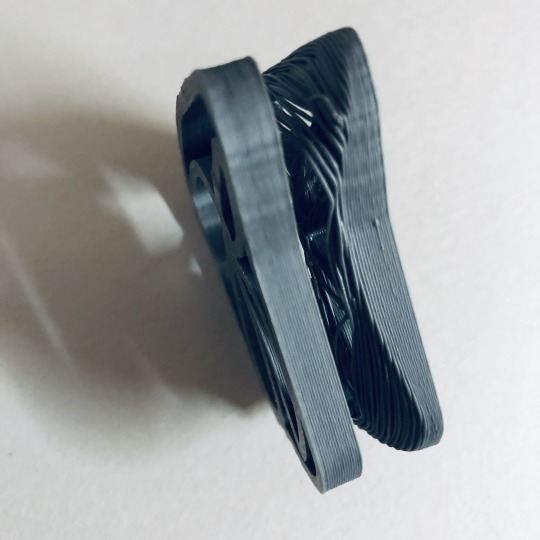
While my 3D print (image above) was produced in the exact replication of its digital blueprint. In the middle of the printing process, a deviation or an error had occurred, resulting in an unexpected pattern and weave of lines at the top of the 3D object.
If I were to re-create another 3D print of the same image, the next error that may occur would unlikely play itself out with the same patterns and weave as the previous.
This lack of predictability, constraints and unexpected developments that largely go unaccounted for when we create with technology, in my opinion, represents a point of creative deviation and intervention. In order to bring the creative developments back to our intended course, there has to be some form of intervention on our part.
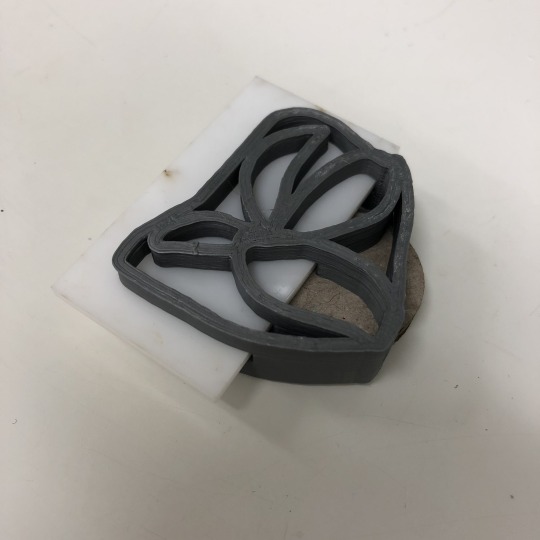

Likewise, the replacement of places on the object using acrylic and cardboard parts is representative of a form of creative intervention that sought to make up for parameters beyond the capabilities of a technology.
Over the course of the next few weeks, I will be developing upon this idea of Error & Intervention by creating a constellation of sculpture-objects that show a fusion of technological error and human intervention. I will be highlighting how error or glitches could possibly be closer in meaning and ontology to art and how errors open up a dimension for creative intervention and development.
0 notes
Text
Gestalt = 3D printing + Laser Cutting
Confronted with the limitations of the technology in the last 3D printing test, in this experiment, I have modified the initial design and deconstructed the different parts so that the separate parts can be fabricated separately and then joined together.



This visual arrangement where the parts are conceived separately and then put together into a unified whole allows for the surface materiality that is inherent within a certain technology to be observed beside the other.


For instance, by conceiving the scribble using 3D printing and the two other parts, the cylinder and rectangle by laser cutting, we can observe the different characteristics of the material (i.e. acrylic and PLA) when they are juxtaposed against each other.
Laser cutting allows for the precise cutting of a shape and retains the material properties of the object, i.e. acrylic, cardboard etc.
3D printing on the other hand, is made of a synthetic nylon material, that has a coarse and textural surface.
This assemblage of different parts opens up a myriad of other compositional possibilities. Just like in a collage, disparate elements can come together to generate visual excitement. Besides combining materials fabricated using different technologies, there is also a possibility of combining found materials or “un-fabricated” parts with other fabricated parts. This is one possibility that I will be looking into for the next experiment.
0 notes
Text
First Experiments: 3D Printing and Laser Cutting
This week, I had the opportunity to test out some of my ideas using 3D printing and laser cutting tool.
First, I constructed my designs on Tinkercad (www.tinkercad.com) which is a free app for 3D designs, electronics and coding.
Tinkercad allows me to build 3D forms from its presets: basic 3D shapes, scribbling, text…
Shapes are built on a plane, and that is where you can allow your creativity to move in all directions and dimensions.
These are some images of my first experiments in creating 3D forms:



They are pretty much developed out of some visual ideas from my 2D works.

Tinkercad allows me to visualize those flattened images into 3D renditions.


And here are some of the artifacts from the fabrication processes:
Laser cutting technology has allowed for the fabrication of intricate details and customizable designs on acrylic:
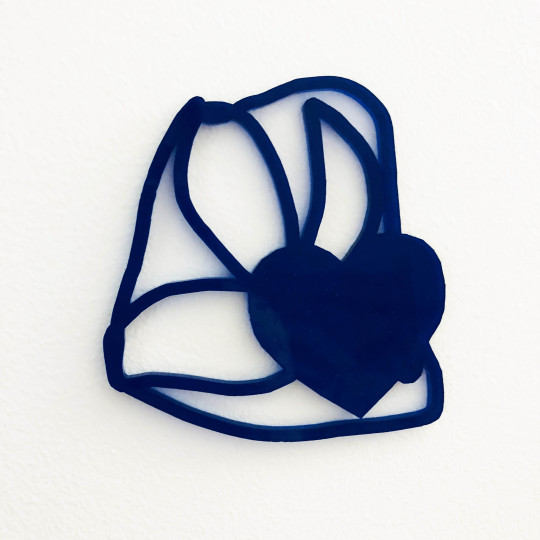
3D printing, too, allows for this rendition of digital designs into 3D forms with precision:

In this 3D printing experiment, my original intention was to create a 3D design of 3 different colors. The purple cylinder/circle and green rectangle being sandwiched in-between the grey exterior form.
However, one of the limitation of the 3D printer is that it is not really possible to print in more than one color at once. To do so would involve doing it in layers, stopping the machine every now and then... to change the colors in between the different layers. Hence, the current design that I have where a different color is sandwiched in between a shape would be tricky to print and perhaps beyond what the current 3D printer can do.
I think this limitation presents a lot of food for thought surrounding some of the deeper issues pertaining to making good designs that work - for 3D printing or any technology. It also echoes on the common thread of how creative ideas are often born out of the limiting conditions surrounding a particular medium or domain.
I will definitely get round to test out multiple colored printing for the next round of experiments.
0 notes
Text
Update on Mind-Map

0 notes
Text
Creative Technologies
Fabrication tools have been appropriated by artists as far back as the 1960s where artists collaborate with engineers to test and push the boundaries in art and technology.
Creative technologies allows for the translation of our digital visualizations into the physical realm, converting the once flattened images into three dimensional forms. This process of translation involves converting digital constructions developed in New Media, i.e. Adobe illustrator, Processing, Turtle Stitch etc…, into the material through New Technologies such as 3D printing, Vinyl Cutter, Digital Embroidery etc…
More commonly, we can observe another similar process of translation that bridges the gap between the digital and material, from RGB colors in digital screens into CMYK in print. At the material level, we are dealing with indirect or reflected light whereas in digital displays, we utilize direct or projected light.
In my research, I am looking to explore the correlations and contrasts between the materiality of paint and digital constructions. When we integrate art with technology, we are inevitably looking to balance emotion with reason, the subjective with objective, disorder with order within the pictorial plane.
The level of precision enabled by technology allows us to venture further into the visual vocabulary of Consonance as opposed to Dissonance. Visual consonance involves a level of precision where visual materials involving numbers, geometry, harmony and precise color/light relationships could be allowed to take center stage with the introduction of technology.
0 notes

